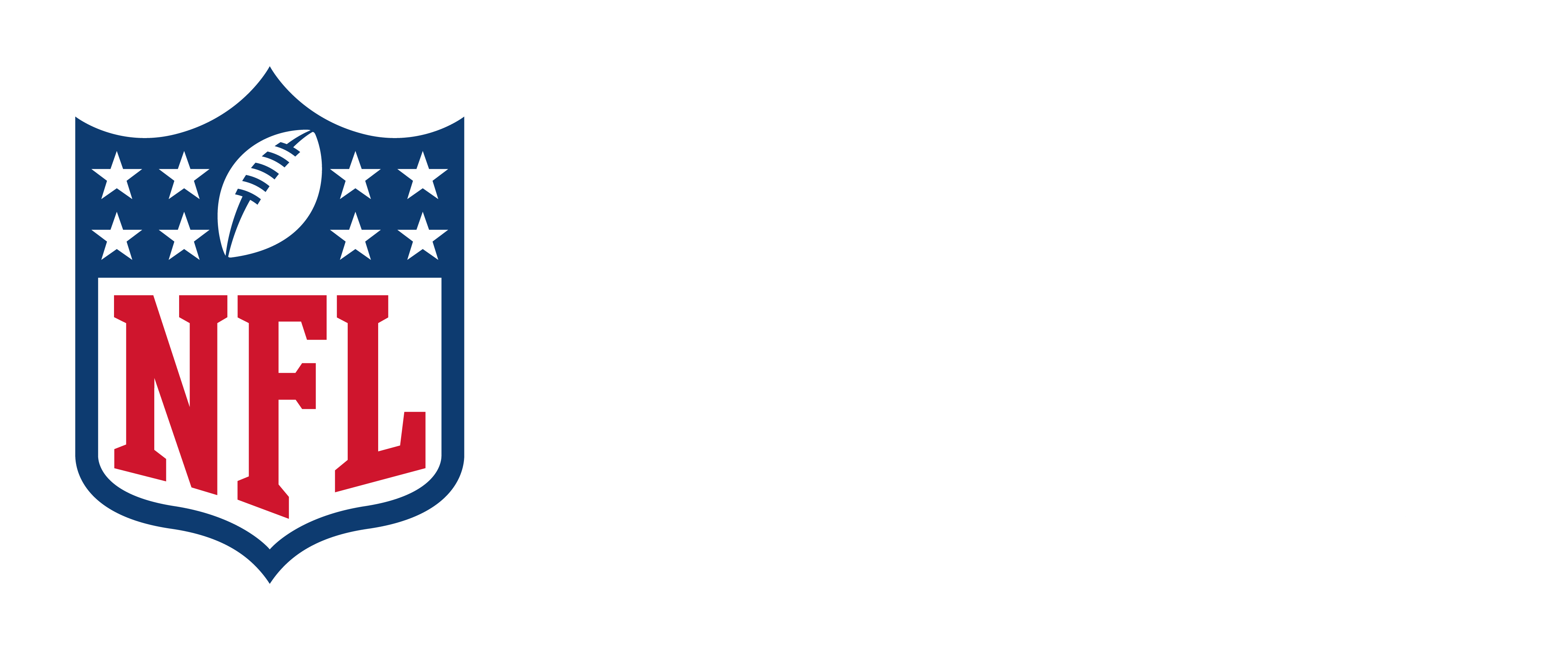The NFL hosted a health and safety-focused media briefing on October 17, 2023, during the 2023 Fall League Meeting in New York, New York.
Speakers:
- Rich McKay, Atlanta Falcons CEO and NFL Competition Committee Chairman
- Jeff Miller, NFL Executive Vice President of Communications, Public Affairs & Policy
- Dr. Allen Sills, NFL Chief Medical Officer
Rich McKay: I will be quick. Let's talk about the game. We're six weeks in. I'd say games are in a pretty good place metric-wise. All the important metrics look good. The most important metric we have in football is competitive balance, and right now, that's about as good as it's been in a long, long time. We feel pretty good about that. You've seen all the stats. The stats we like the most are close games. We have 10.3 games per week that have been one score in the fourth quarter – that matters to us. And we have scores that are within three points – I think we're at 3.3 games per week. We like the fact that we have 14 games that feature last-minute, last-possession game-winning drives. A crazy stat that we have – 22 teams through six weeks that have three or more wins. That's just a very unusual stat for us. Metrics wise, when you look at where the game is today, the passer rating now – the average passer rating was 88.2. To think about that historically, that is a huge uptick. Completions per game, through week four, we're at a completion percentage of 65%. The game has certainly evolved, which we like. It's changing. The big metrics that we always look at: plays per game, passing yards per game and penalties per game, because when you look at those three, you can use it with the equal sign and say that leads to points per game. And that's kind of what's happened this year. Penalties per game are in the traditional spot, at 15 per game, passing yards are up, they're about 440, and plays are at 44. Plays have gone down a little bit – we were concerned about plays per game throughout this year. But points are up to 44, so as I said, from a metric standpoint, games are in a pretty good stead for only six weeks in. Long way to go. Competitive balance is the metric we like the most and it really is in a very good place right now. It's kind of where the game is.
Jeff Miller: Afternoon, everybody. We just provided an update to the owners on some of the health and safety initiatives, preseason injury rates, where we are in the regular season and some of the focuses that we have with the longer term. Just a quick update on those. A good preseason from an injury rate perspective; injuries continue to go down. We're at an eight-year low for the lower extremity injury rates that we track very carefully, as many of you know. We're sharing a lot of data among the clubs analyzing it and trying to help clubs acclimate their players better at that time of year – the first couple of weeks, when injuries are at a high. We saw a substantial decrease in those sorts of injuries, the lower extremity injuries, during that period of time last year. They've decreased even further this year. So it is a cause for an appreciation for the data and the analytics that go into this as we measure players' time on field, the amount of accelerations, decelerations they're doing, and feed that back to the player. It's a healthier league over the first couple of weeks of Training Camp, which is obviously a nice moment for us to appreciate and something more for us to work against in the coming years. A couple other points of focus we have; Allen will talk about concussions and Guardian Cap in a second. A couple of longer-term areas that we've focused on are the hip-drop tackle and the kickoff. As you know, we saw the kickoff concussions in the preseason drop just a smidge. They're small as it is, we only saw two concussions on kickoffs in the preseason, which is a low. And on the hip-drop tackle, we continue to monitor it. It remains, from our analysis, a technique that results in about a 25-times-rate of injury as a typical tackle. It is an unforgiving behavior, and one that we need to try to define and get out of the game. To quantify it for you, we see an injury more or less every week in the regular season on the hip-drop. That's something that we're spending a lot of time with Rich and the Competition Committee on in an effort to understand and define it, because until you define it, you really can't remove those sorts of behaviors from the game. Since we're seeing substantial injuries when it does occur, we want to make sure that we're on top of that and appreciating it so that we can eventually remove some of the riskier behaviors. That's something that we'll spend a lot of time on in the offseason, as we will kickoff. I think that's a quick summary of what was shared with the owners with the exception of discussion of the concussion numbers and the Guardian Cap, so Allen, why don't you do that.
Dr. Allen Sills: Thanks, Jeff. Good afternoon. Concussions and Guardian Cap in the preseason remain a substantial success. Our Training Camp concussions, those that occur prior to the start of the preseason games, were at a seven-year low this year, in terms of numbers of Training Camps. We look at the effect of the Guardian Cap by looking at those mandated positions that wore the Cap compared to those that don't. Then we compare each of those positions against their three-year average – so what was their three year average of concussions prior to when we started using the Guardian Cap? If you look at those position groups who wear the Guardian Cap in preseason – that's O-line, D-line, tight ends, running backs, linebackers – again, this year, they were down 46% in terms of number of concussions compared to their three-year average. That's basically two preseasons in a row where we've seen that magnitude of a drop, suggesting that the success we saw last year in the preseason wasn't just an aberration – it was actually sustained again this year. In contrast, those position groups that did not wear the Guardian Caps, captains – those other players on the field – again, they're up compared to their preseason average of the last three years, about 50%. What that tells us is the reduction that we're seeing with the Guardian Cap is not just because teams are practicing less so there's less contact, there really is a substantial benefit. Those wearing it are down 46%; those not wearing it are up about 50%. Our engineers that have reviewed those players who did suffer concussions that were not wearing a Guardian Cap felt like an overwhelming majority of those might have been mitigated had a Guardian Cap been used. We think the Guardian Caps are showing their benefit, and it certainly will be an active discussion about next steps with that as we move forward. The other thing that we shared with the owners is that we continue to make reduction of all head impacts one of our top priorities. As the Commissioner responded, saying, we believe the game can be built safer and more exciting. While our sport is a contact and a collision sport, that contact-collision does not have to involve the head. That's what we're really working very aggressively to do. One of the things that we're doing this year is around sharing data on head impacts. We have now – I think we've mentioned to you before – an artificial intelligence computer vision system that can measure how many head impacts are happening during the game. We're taking that data and sharing it back with our clubs. Every week, every one of our teams gets a report for their offensive and defensive lineman on how many helmet impacts they had as a team – compared to their season averages and compared to the league – and they get individual reports on each player. For each lineman, they get a report on how that player's helmet impact rate was for that game, again, compared to their season, compared to others playing that position, and then break it down even further by block time. Obviously, the goal of sharing all that data is to try to help coaches, help players change behavior and ultimately reduce helmet impacts. That's something we updated the owners on as well.
QUESTION: Jeff, can you drill down a little bit on the hip-drop tackle and define it? And are the injuries to the tackler or the person being tackled?
Jeff Miller: I think your question identifies the challenge, which is to be able to implement and really be able to define what the behavior is. That's the purpose of the work that we're doing currently, which is to say, what are the common elements that would define a hip-drop tackle? Is it the swivel motion with one's hips? Is it where you grab the ball carrier? Is it landing on their ankles or knees? Is it de-leveraging or de-weighting yourself as a tackler to bring somebody down? It's some version of that in the health and safety estimation, and Rich can talk to it from a football perspective more articulately than I can. Once we define it, then we're going to be able to put harder numbers against it. But in the case of where the injuries occur, it is to the ball carrier. He's being brought down almost as if it's a cousin of a horse-collar tackle, and brought down in a way that impedes his forward progress and puts him at a vulnerable position against injury because the tackler is using his body weight, landing in part on the ball carrier's legs or knees, and therefore putting him at a greater risk than your typical shoulder-down drive-through kind of tackle. There's a lot of work that's going into this, because it doesn't really matter what we do unless we can define it in such a way that you can officiate it and regulate it.
Rich McKay: The only thing I'd add there is I think the horse collar is a good place to start. In that technique, what's happening is the defender is grabbing from behind and then immediately is pulling them down and falling on the back of their legs. What's happened is, really, the runner becomes defenseless; the runner has no way to defend himself when that happens. What's happening on the hip-drop is the defender is encircling and tackling the runner, and then swinging their weight and falling on the side of their leg – which is their ankle, or their knee. Again, when they use that tactic – you can see why they do, because it can be a smaller man against a bigger man and they're trying to get that person down, that's the object of the game – but when they do it, the runner becomes defenseless. They can't get their leg out from under them, and that's where the injury occurs. You see the ankle getting trapped underneath the weight of the defender. All the years that we've done this and we've had these rules – whether it's been defenseless player in the middle of field, whether it's been horse collar – you're always going to have the defender come back and say, "Hey, you're making it harder on us." And the answer to that is yes, we are. Because when there's a tactic that's being used, or a technique, that's creating an unreasonable risk of injury to a player, it's our job to try to find a way to regulate that. In this one, this is just a study that's gone on, they've brought forth a lot of data, we looked at a lot of plays last year. The hard thing about those plays was the commonality of how you would write it and regulate it. That's why this year was going to be the study, the focus of it, telling the players, "Hey, we don't want this technique. If we can get it out, we should get it out." And then studying at the end of the year of, what can we do?
QUESTION: For Rich and maybe for Jeff too, about the kickoff rules this year. I think it's like 80% of kickoffs are now touchbacks. How does the league feel about that? Are you studying other alternatives?
Rich McKay: Nobody in the league would say that's successful, that's the aim. It was what we knew was going to happen. When we went to the college rule, which is in essence allowing a fair catch, then obviously the response back was not a squib kick and was not to hang it, it was to kick it through the end zone. We've achieved the one thing we needed to achieve, which is take a play that had a high collision rate and reduce the concussions we were having on that play. But we've done it again by making the play a little more ceremonial than it should be. The object was that we pass that rule for one year, to put pressure on ourselves to come back and reinvent that play and keep that play in the game, which I'm sure it will stay in the game. The hope is it stays in the game, not in a way it is this year, but modified in a way that it comes back and we get more returns in the game, but it is safer and a safer play. That was the object. I can't say we expected it to go this far, and it'll come back a little bit. Weather always does this – remember, it's going to come back when it gets colder. But it's not going to come back to 40%. That said, I would say it's achieved the health and safety results that we felt like we were mandated to do based on the data we had. The hope is that we can evolve it going forward, and make it more competitive.
Jeff Miller: Let me just add to that. I think it's important to remember how we got to this place. You look at the injury data over the course of years, you were seeing an injury rate – concussion rates specifically, as it relates to kickoff – around about twice what you would see from a runner/passer. And despite the many changes the Competition Committee has made to the kickoff over the years – blindside blocks, getting rid of wedges, on and on – that never had a beneficial impact over a longer period of time. Those numbers would go down and come back up. And that's where we are today. As we talked about it with the Competition Committee, they made the strong point that, "Well, we can't sit around and do nothing, knowing the risk." Hence the one-year rule. The goal, as Rich points out, is we need to find a way to make that play look similar from an injury or risk perspective to your typical play from scrimmage, then we will all be satisfied. But knowing that there's a lot of work to do to get to that place. And other leagues have put forward other ideas, we want to research those and see if those can be implemented into our game – what would the benefits and the costs be to doing that? That's going to take a little bit of time and will obviously be an active conversation this offseason. As it relates to concussions and kickoffs this year so far, in the regular season I think there's been one so far. It's had that effect.
QUESTION: On the kickoff?
Jeff Miller: On the kickoff. I think there's been one so far, which is good. But nobody's totally satisfied with where we are. It's a work in progress.
QUESTION: For Rich, and also maybe for Jeff. Another issue where you had conversations last offseason and didn't take action yet was the push-the-quarterback play. We're seeing some more teams trying it now – I can think of maybe one instance where you had some players who were blocking on the line of scrimmage, who were hurt on one of those plays. Where do you think you are on that, and do you think you'll come back to that again?
Rich McKay: It takes 24 votes to pass any rule. I think last year was the first time we'd seen it used in the way it was used. This is year two. There'll be more data, whether there's injuries or not. There'll be success rates, there'll be teams that will have an opinion. Will we talk about it again? I'm sure of it, because it's being talked about by all of you, so it will be talked about by us. But I'm not in the business of predicting what that means. Last year, we did talk about it a lot. I think that there were enough teams that said, "Hey, you know what, it's one year. Let's see it, and leave it alone." So we did, and I'm sure it'll be back again. But I just don't want to get in the business of predicting, because I really don't know what the outcome will be. I do know it will be talked about.
QUESTION: Dr. Sills, in regard to the Guardian Cap, what are the realistic possibilities being considered for usage?
Dr. Allen Sills: Well, I think based on the data that we talked about, I think we'll certainly look at expansion to other position groups in practices and in all the trainings that we're doing. People often ask about games and where we go there. I think one of the things is important to know about games is we have about a decade's worth of experience with Guardian Cap in a practice environment at the collegiate level. Over 100 NCAA teams had worn it in their practices for a number of years, so we have a lot of data there. Anytime we make an equipment innovation, we've got to look at the benefit of it, but also is there a risk? And so you've got to see both sides of that. We obviously have not had a lot of game data to evaluate, because it's really not been worn in games up until this season, I think. I know there's at least a high school or two that are wearing it. Some colleges are starting to wear them in their Spring Games. Really where we think this is going is not about the Guardian Cap per se but about the better design of helmet. What can we learn from what the Guardian Cap has taught us, and incorporate that into the design of the helmet? We're already seeing that innovation take place, we're seeing those conversations take place, we're also seeing some additional types of helmet add-ons that are being developed. I think you're gonna see this be an area for innovation over the next couple of seasons based on what we're learning so far.
QUESTION: This is for Jeff and Allen. Last year, you guys were pretty open about the fact that the slit film turf was less safe than many other types of turf or grass. Six stadiums had it last year, three have it this year. Why were three teams allowed to go forward with turf that you guys materially knew was less safe? And especially in the light of Justin Jefferson getting hurt on one of those surfaces, why isn't there stricter policy on playing surfaces in general?
Jeff Miller: It's a good question, as we learn more around surfaces. And let me actually take a step back here. What's interesting about surfaces is how collaborative the work actually is with the Players Association. The design of our CBA mandates that we work together on this, and have a Joint Surfaces Committee. I always try to say this, either publicly or privately, the people who the [Player's Association] has put against this work with our engineers are first rate. The research that's being done, the appreciation for the sort of characteristics of the surfaces, and understanding within the scope of the research plan has really gotten off to a good start. I think that there's going to be a long-term, even a short-term, benefit from that which we're going to see from a surface perspective. The hard part, and I think we've talked about this a little bit, is the variation from surface to surface across the league. We have 32 teams that play in 30 stadiums, and I've come to say – and we just shared with the owners a few minutes ago – we have 30 different fields. You may have two surfaces – synthetic surfaces, whether it be slit film, or monofilm, or a hybrid, or any number of others – that don't play the same way. That has to be remembered. Maybe they're in a different climate, maybe they're indoors and one's outdoors, maybe one is maintained in a different way from its infill, from its age, from whatever the case may be. Those characteristics and those variable – I don't want to sound like a scientist here – but those variables are so diffuse that it's hard to make a strong recommendation against any one thing. An injury rate for a grass field may be higher than a synthetic field and the vice versa could be true, as we've seen. And those injury rates have varied a little bit over the course of years. But when we see something, we share it with those clubs who could potentially make those changes and that's what happened. I think that's probably the right cadence. Which is to say, to maintain an understanding of what those surfaces are doing on an annual basis, understanding the characteristics of the surfaces – and if we see something, share with those clubs so they can potentially make a change. There is no one size fits all, unfortunately, yet. The goals are both to identify where there's injury rate issues and hope that we can do a better job for those surfaces over some period of time. But also, I think a goal needs to be to limit the number of different sorts of services that our clubs play on, so a player has an appreciation when he steps on a field in one city, that it's going to feel very similar to the surface that he steps on in a different city – so it doesn't feel hard or soft, or slick or sticky. He knows what that's going to feel like, and therefore his appreciation for it is going to satisfy him to some degree. The last point is that where we are today versus where we're going to be in three years from now on this with the Players Association is going to change substantially. There are going to be advances in our understanding of the research and the data – potentially engagement with FIFA around what they're going to do with 11 of our fields over the next couple of years – such that I think we're going to see a big difference. That's going to come in what the fields look like, how they play and perform – from an injury perspective, as well as a performance perspective. Then, hopefully, a similarity among fields so that the sort of challenges that the players face today are lessened.
QUESTION: Does the league have a stance on Minnesota, Indianapolis, and Cincinnati making the decision to go forward with slit film?
Jeff Miller: No, there's no specific regulation against surfaces. It's an information-sharing thing. I'll give you an example. There was one stadium in the league this year that made a move from a natural grass field to a synthetic field. From an injury rate perspective, that was a logical decision for them to make. Looking at how that surface had performed, almost every single year over the last five years, the injury rate – and, now we're talking largely about ankle sprains and some of those lower extremity injuries that potentially could be associated with the surface type, there's a lot of variables that go into that, too – they looked at and said, "OK, our injury rate is here. If we adopted this synthetic surface, the modeling for our injury rate would go down." That is understandable, logical, supportable. When you take a look at the surfaces writ large – and you look at each individual circumstance, I think as to those as a whole, because in each individual case, you can make that decision – I'm sure the ones that you mentioned, the stadiums you mentioned are going to continue to look at this with an eagle's eye over whether or not they want to make a change and if there's something better that they can move in.
Dr. Allen Sills: Two other small points. When we look at drivers of injury from a medical or biological standpoint, the surface is one of those, but it's not the only one. Causation and association are two very different things. We're really trying to understand injuries at a much more fundamental level – not just grass versus artificial – but what are the properties not only of the surface but of the footwear, of the previous injury history, of exposure, of load, of play type – all of those things, trying to make the game safer. If we look at ACL injuries, for example, how do we reduce ACL injuries? It's looking at all of those factors. I think it is a very complex topic, and understanding and attributing what is the role of surface to an individual injury, particularly one person, is very, very challenging. Secondly, we are engaging with every other professional sports league around the world that has a similar population of athletes to see what they're doing, what they are learning, how they monitor their surfaces, what is their practice around that so that we can leverage that knowledge and try to improve safety overall.
QUESTION: Hi, I have two questions, although, now I have three after what you were just saying. First is you were talking about the AI with the impact rate? Is that just looking at O-line and D-line? Or is that all positions?
Dr. Allen Sills: No, the computer vision can get helmet impact rates everywhere on the field.
QUESTION: And can you just explain how that works a little bit? How is it measuring it?
Dr. Allen Sills: Now you're really challenging me. [Laughter] Essentially, the computer is taught to recognize helmet impacts – it's a training algorithm. It really started with our mouthguard sensor work. We had a number of players wearing instrumented mouthguard sensors and looking at those impacts. Having some understanding of that and where they're occurring, allows you to teach the computer, if you will, what to measure as a significant impact. You don't want the computer to call an impact if Jeff and I collide shoulders, for example. They're looking for certain translational movements of the head that are associated with contact and helmet-to-helmet interactions on the field. That's kind of the best way I can describe it, is it tags each one of those and just characterizes it. Now, it does not characterize the magnitude at all. It can't say, "That was high energy or low energy." But it just says two helmets did come together. That's how that piece of it works. The great advantage is we used to do that manually. Somebody used to literally sit there and watch the game and tag everyone. I always say that it's not a summer job that you want to have. That's a pretty laborious task to go through. The computer can do an entire game now in about 10 minutes.
QUESTION: Back to the field surfaces. You were talking about looking at professional sports leagues all around. What about college stadium surfaces? Are they looking at any of these same things? It just seems like that's the biggest similarity in terms of population. Is college football appropriate?
Dr. Allen Sills: Yeah, we have consultants, as does the [Players Association], who are involved in the college sports space. I guess my point was a larger one that we're trying to look at this from athlete health/injury perspective and trying to learn what other leagues have done, what have they measured, and how do they assess and measure their fields. Coming back to Albert's question. If you want to understand what is it about the field that really might be related to injury: Is it stiffness? Is it hardness? Is it moisture content? Is it infield depth? There are so many different properties. And that's kind of what Jeff was referencing. When you talk about all these different fields, it's not just Bermuda grass, Rye grass, but what are the actual properties biophysically of that field and how might that relate to injury? That's what we're trying to unpack and understand. Because that's what's going to help you ultimately get to the better recommendations, here is what you have to reduce injury.
QUESTION: Dr. Sills, you mentioned the 50% increase in concussions over a three-year average. What is that 50% increase against, from concussions over the previous three years?
Dr. Allen Sills: If you look at those position groups who did not wear the Guardian Cap, we know was was their three-year average of concussions suffered during the preseason practices. We look at 2023 for those position groups relative back to that data prior to when the Guardian Caps were worn. The goal is, if you just look at the group that had the reduction, you might say, "Well, that's not the cap. That's because we weren't hitting as much, or there wasn't as much contact, or there were other changes that were going on." We're trying to look at that as kind of a control group when they don't have the Guardian Cap on to have a better assessment of the impact of the Guardian Cap. Does that make sense?
QUESTION: It does because the 46 and 50 were throwing me off. And then the next question would be the position-specific elements, specifically the quarterback helmet. Any sort of injury data so far on that or how that's going?
Dr. Allen Sills: It's really early. Again, we always hesitate to make a lot of conclusions off of a few weeks of data, because we've seen that really change. I think there are nine quarterbacks that are wearing the quarterback-specific helmet. Not all starters, but that's going to give us a cohort. Now, that's still a pretty small sample size, but it'll at least give us some initial insight into it. Then we also have a number of offensive and defensive linemen who are wearing that lineman-specific helmet. We'll obviously track that as well. More to come on that at the end of the season, but we think that's a very positive development. And obviously, as you know, those helmet models tested really, really well in our laboratory testing. That laboratory testing has always done a pretty good job of predicting what's going to happen on the field, so we have a lot of confidence in that.
QUESTION: Mr. Miller, you were talking about an eight-year low when it comes to the incidence of lower extremity injuries in the NFL. Keeping it simple, while I understand it's very difficult to identify cause and effect, and there are a lot of isolated variables, are you not saying that you didn't see any peaks when it came to comparing one surface versus the other? Or even one club versus the other? Because you were talking about the data as a whole. I want to know if you still didn't see any peaks when it comes to individual variables versus just kind of that mean.
Jeff Miller: No, we were down. I got to go through each individual data point that you just referenced. That's a thoughtful question. The trend has been heading down through the last few years across the board. But remember, I'm not talking about games, I'm talking about practices. The goal there was to help the clubs acclimate players to the sort of game intensities and speeds that they need to more slowly than they were doing before. We limited it to a very modest degree to the amount of on-field time they had the first few days. Then when they put pads on, after the fourth day, to re-ramp, start lower, and go back out so the players' bodies got acclimated to it. In that period of time, we had historically seen the most injuries throughout any time of the season – and those numbers have dropped dramatically as a result of the work over the last two years. We were benefited because the injury statements we actually saw go throughout the entirety of the preseason, which was great. Practices, again, not games. If you had to look back at any of the details that you mentioned, the different clubs definitely had different injury rates, no question. Some of the specifics around how much activity their players participated in, joint practices, and how that affected the injuries, are things that we need to do some research on during the offseason.
QUESTION: Even as I tweeted this out you have fans from different teams who feel like their teams have a higher rate of injury versus the other. That's why I was just wondering if you were seeing things in those individual categories versus telling us what's happening as a whole.
Jeff Miller: No, no, certainly there's individual data. Unfortunately, as much as it seems like any one particular fan or club when they lose a player or two to injury, there are a lot of injuries. The amount of data for each individual club is really not enough to make conclusions against, so we look at the 32 as a whole. We share individual information back with the clubs, of course, and how they compare to the other ones so that hopefully there's a benefit to all of them from the learnings that each club experiences. No question there's going to be dips and heights as you look at each individual club data, as you look at each individual club week, each individual club joint practice. All that kind of stuff is pushed back to the club to say, "Hey, here's what you guys did. And here's how you compare to the other 31. And here's where you varied from the practices that they engaged in. And here's what the results are, so maybe we can do something better in the coming year."
# # #











